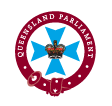-
Work of committees
- Upcoming Committee Business
- About Committees
- Training Seminar - Committees@Work
- Committees (10)
- Committees Glossary
- Estimates Hearings
-
Inquiries
- Live and Archived Broadcasts
- Publications
- Guidelines (4)
- Subscribe
- Former Committees (67)
- 30 Year Release
- Past Alert Digest and Legislation Alert Indexes
- Ten Year Anniversary
Weapons (Digital 3D and Printed Firearms) Amendment Bill 2014
False
Call for Submissions
Submissions closed on Friday, 18 July 2014.
Guidelines on how to make a submission are available here.
Objective of the Bill
The policy objectives of the Bill are:
- to create a licensing scheme for persons who make, acquire, possess and/or distribute digital 3D firearms as well as for licensed armours involved in the manufacturing of firearms using an additive manufacturing process;
- to provide transitional provisions for the licensing scheme;
- to create offences and punishment provisions for persons who unlawfully make, acquire, possess and/or distribute digital 3D firearms; and
- to amend the Weapons Act 1990 to include new definitions as necessary.
Other Information
The Weapons (Digital 3D and Printed Firearms) Amendment Bill 2014 and Explanatory Notes are available from the Office of the Queensland Parliamentary Counsel at www.legislation.qld.gov.au.
The Hansard transcript of the explanatory speech for the Bill can be accessed here.
Public Hearing
The Committee has resolved to hold a public hearing on the Bill on Wednesday, 15 October 2014.
The Committee will hear from invited witnesses only, on the proposals being advanced under the Bill.
Members of the public are welcome to attend the hearing. The hearing will also be broadcast live on the Queensland Parliament website, and can be viewed here: www.parliament.qld.gov.au/work-of-committees/broadcast-committee/live.
Reasons for the Bill
It is now possible for digital 3D firearm technology to be applied in conjunction with an additive manufacturing process (i.e. 3D printing) to make a physical and operative firearm. Technology advancements associated with the application of digital 3D models and 3D printers are increasing and cost inhibitors are reducing. Nowadays digital 3D model technology can be extensively applied.
There are many positive uses of such technology including for medical, scientific and industrial purposes. The same technology can also be applied though for criminal purposes. Accordingly, it is emphasised that laws must keep pace with technology to effectively protect the community and all citizens alike.
The possibility and affordability to actually print a physical and operative firearm may be enticing to some persons, particularly those who participate in a range of criminal activity. From this perspective it is important to recognise that the making, acquisition, possession and/or distribution of a digital 3D firearm and/or use of an additive manufacturing process to make a firearm inherently exposes the community to very real and significant risk. Unauthorised activities of this kind must therefore be considered as a crime and dealt with fittingly.
Referral
On 22 May 2014 the Member for Yeerongpilly, Mr Carl Judge MP, introduced the Weapons (Digital 3D and Printed Firearms) Amendment Bill 2014 into the Queensland Parliament. In accordance with Standing Order 131 of the Standing Rules and Orders of the Legislative Assembly, the Bill was referred to the Legal Affairs and Community Safety Committee (the Committee) for detailed consideration.
In accordance with Standing Order 131 of the Standing Rules and Orders of the Legislative Assembly, the Bill was referred to the Legal Affairs and Community Safety Committee (the Committee) for detailed consideration. Under Standing Order 136(1), the Committee must report to the Parliament on or before 24 November 2014.
Report
On 7 November 2014, the Committee tabled its Report No. 80, Weapons (Digital 3D and Printed Firearms) Amendment Bill 2014. A copy of the report is available here or can be accessed at Related Publications.
The Government tabled its interim response to the Committee's report on 22 January 2015. A copy of the Government Response is available here or can be accessed at Related Publications.
As the Weapons (Digital 3D and Printed Firearms) Amendment Bill 2014 had not been considered by the Legislative Assembly prior to its dissolution on 6 January 2015, the Bill automatically lapsed.
Related Publications
| Publication Details | Type | Published Date | Tabled Date | Committee Name |
|---|
